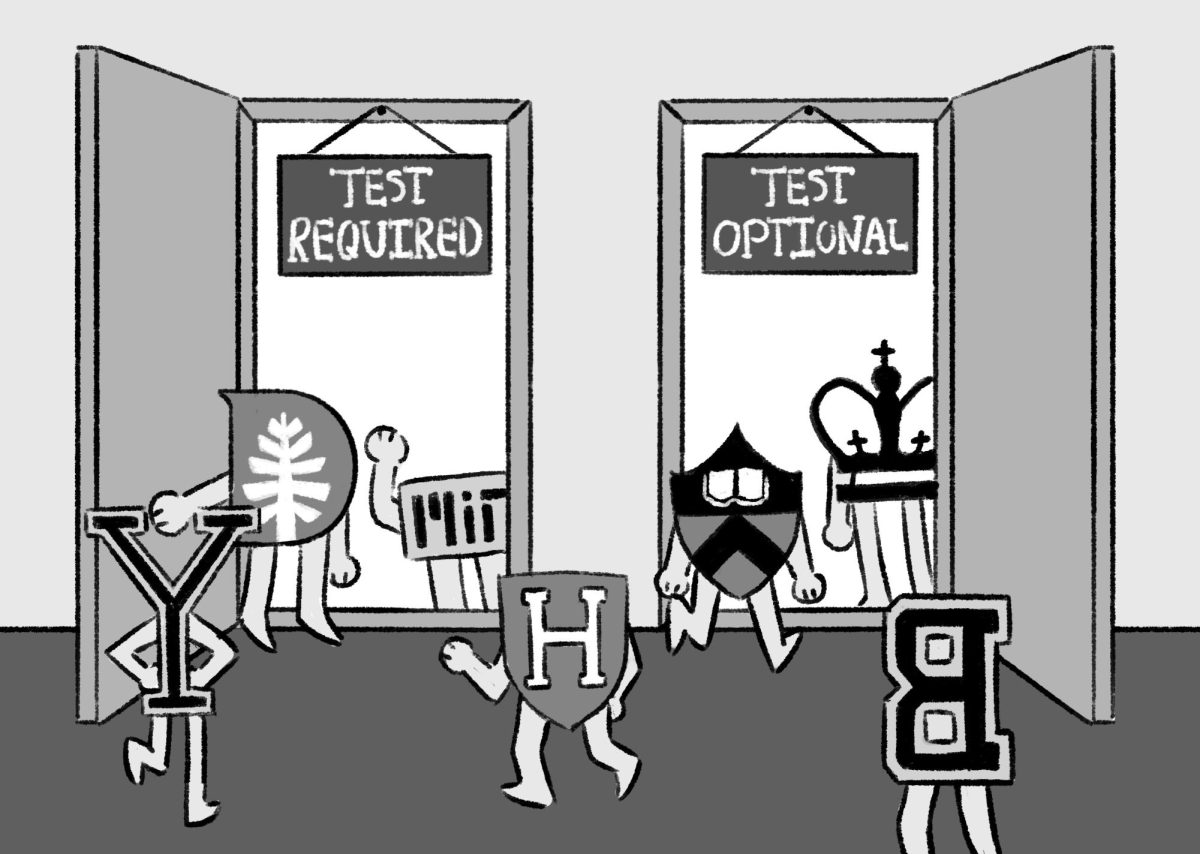The college application process, already unpredictable and demanding, has recently decided to throw students another curveball. One by one, formerly test-optional universities across the country are returning to the traditional standardized testing approach.
When COVID-19 hit and testing centers became unsafe to visit, many colleges decided to implement a test-optional policy. Though a few universities across the country were already test-optional, the COVID-19 pandemic caused this practice to spread.
However, as the threat of COVID-19 has abated, some colleges are choosing to return to standardized testing. Georgetown, MIT, Brown, Dartmouth, Yale, and Harvard are among many of the colleges that have either announced that they will require testing or have already reinstated the policy.
“If I had to predict,” Mr. Worthman, Director of College Counseling, explains, “we might see a few more [colleges] returning to required testing. But I don’t think we’ll be seeing many.” Each component of the application process is designed to sift through students, and many colleges have seen applications increase as a result of the test-optional movement. Places like Harvard, Yale, and other prestigious universities can easily afford to re-establish standardized testing due to their international reputations; these universities have no shortage of applicants, while others could see a drop in candidates if they returned to requiring test scores.
Standardized testing is a complicated subject to navigate. Dartmouth, for example, has conducted internal research showing that the best predictor of academic success is the high school transcript. However, when they used standardized testing along with GPA, they found that the combination was an even stronger predictor of success. Many universities implement standardized testing because it is just that — standardized. “In an era of grade inflation,” Mr. Worthman says, “the loss of required testing means one less piece for [the colleges] to distinguish students.”
However, while standardized testing scores aim to be an objective measure of academic capacity, it is often not the case. Testing anxiety, inadequate access to testing centers, and socioeconomic status are all elements that can drag down a student’s score, while extra tutoring and preparation can raise it.
Schools with many resources, such as Lakeside, give students a substantial advantage over students from schools who do not have the same access. Lakeside supports students with test preparation and tutoring, the curriculum is advanced and comprehensive, and the school partners with test prep companies to give students on financial aid an equitable chance on standardized tests.
Additionally, the test has seen a racial gap, with white and Asian students consistently scoring higher than Black and brown students. There are a range of ideas experts have come up with to explain the gap, such as the correlation between race and socioeconomic class, stereotype threat, and culture bias. People of color are more likely to live in areas with inadequate access to quality test preparation and programs. Schools in these areas are often underfunded, unable to provide students with a supportive and enriching learning environment. Some cannot afford the upfront cost and transportation required to even attend a testing session.
Socioeconomic status also plays a crucial role in shaping the culture that we grow up in and absorb. Take the infamous “oarsmen: regatta” question, which asked students to find an analogy matching the example “runner: marathon.” Students from wealthier backgrounds were far more likely to know crew vocabulary terms as they were able to afford to play the sport.
In the past, standardized test scores were a factor used in many college rankings, pushing universities to be highly conscious of student testing scores. Colleges who formerly consulted a standardized test rating alongside an application can now consider students with compelling portfolios who otherwise might have been rejected due to a low score. The same goes for the students: “When removing the barrier [of standardized testing], students who might not have applied start to believe, you know, maybe I do have a chance,” Mr. Worthman says.
Standardized testing is just one factor in a student’s application: high schools consider the transcript most, along with teacher input, essays and writing samples, extracurriculars and leadership, and more. These elements, too, suffer from similar biases, but they are a vital part of the continually evolving admissions process. Standardized testing is a complex subject, and every university has a reasoning behind their decision to implement or avoid it.


